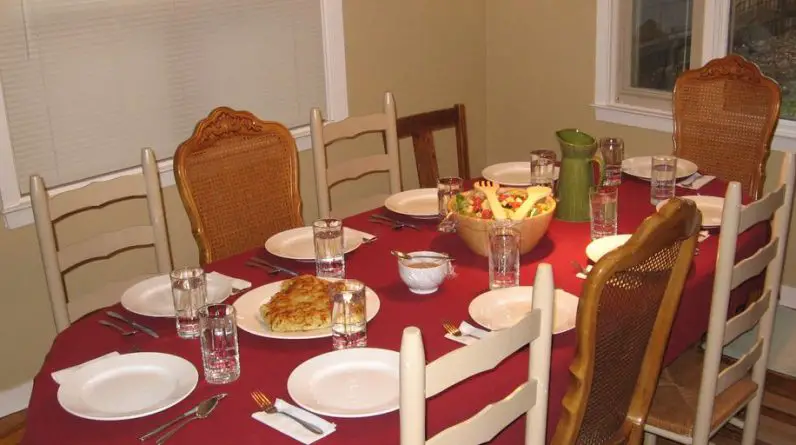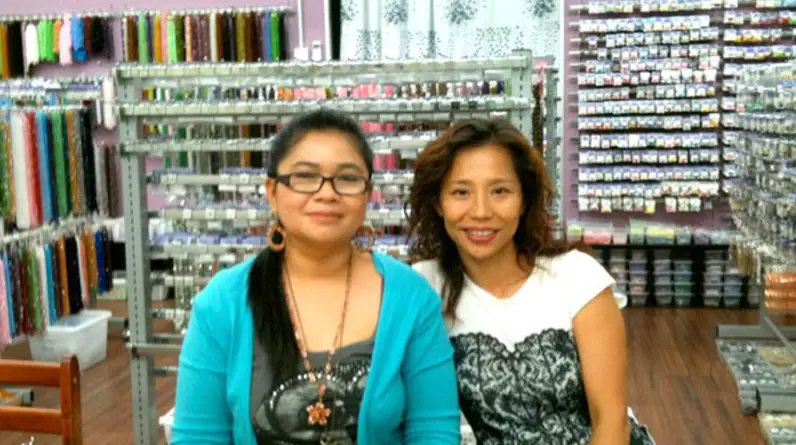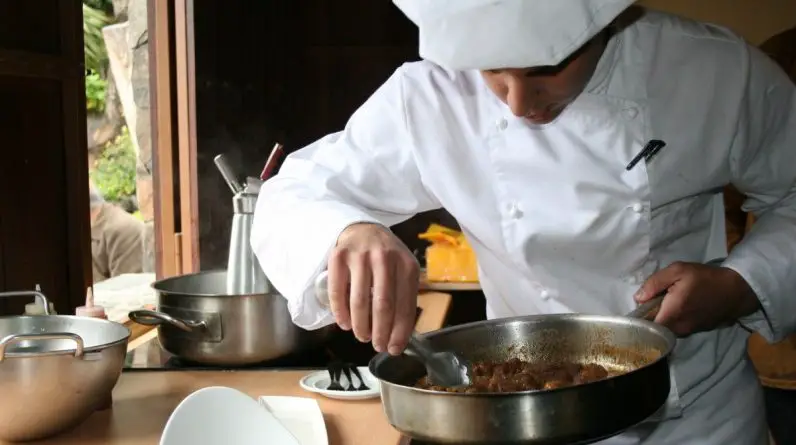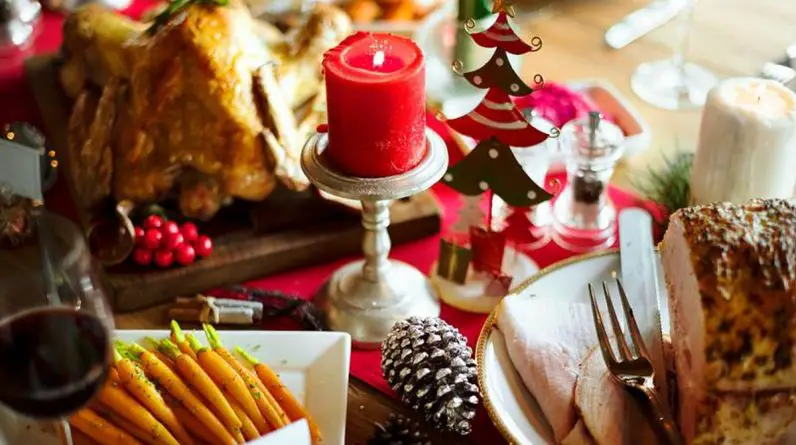The visual feast that is ‘food porn’ has tantalized the taste buds of social media users across the globe. This phenomenon, where sumptuous images of food are shared and celebrated, has grown from a niche interest into a mainstream movement. This article delves into the multifaceted world of food porn on social media, exploring its aesthetic allure, the narratives it crafts, its influence on dining trends, and the communities it fosters, all while considering the ethical implications of this indulgent trend.
Contents
- 1 The Aesthetic Appeal of Food Imagery
- 2 Culinary Storytelling on Social Platforms
- 3 The Impact of Food Porn on Dining Trends
- 4 Community and Connection Through Shared Food Experiences
- 5 Ethical Considerations and the Future of Food Porn
- 6 Conclusion
- 7 Frequently Asked Questions
- 7.1 What is ‘food porn’ and why has it become so popular on social media?
- 7.2 How does food photography on social media impact consumer dining choices?
- 7.3 What is the role of storytelling in food-related content on social platforms?
- 7.4 How do hashtags and social media communities enhance the food experience?
- 7.5 Are there ethical concerns associated with the trend of food porn?
- 7.6 What can we expect for the future of food content on social media?
Key Takeaways
- The allure of food porn on social media is rooted in ‘visual hunger,’ where the psychology of viewing appealing food imagery triggers a desire in viewers.
- Food porn has evolved into a form of culinary storytelling, where dishes serve as a medium for sharing cultural heritage and personal memories.
- The trend has significantly influenced consumer behavior, leading to the rise of ‘Instagrammable’ eateries and food marketing strategies tailored for social media platforms.
- Food porn fosters community and connection, with hashtags and shared experiences creating virtual food communities and encouraging user-generated content.
- As the trend continues to grow, it raises ethical considerations around overindulgence, food waste, sustainability, and the future responsibility of food influencers.
The Aesthetic Appeal of Food Imagery

Visual Hunger: The Psychology Behind Food Viewing
The term visual hunger refers to the innate desire to view appealing food imagery, a craving that is now being satiated through the endless stream of food photographs on social media. Our brains are hardwired to respond to food visuals, triggering hunger and a desire to eat, even when we’re not physically hungry.
- The allure of food photography goes beyond mere appetite stimulation; it taps into emotional and psychological responses.
- Food images can evoke memories, emotions, and even a sense of community as people share and engage with food content.
The aesthetic composition of food can transform a simple meal into a feast for the eyes, creating an irresistible pull for viewers.
As social media platforms become the new dining tables, the phenomenon of food porn continues to grow, influencing not just what we eat, but how we perceive and experience food.
Styling and Photography: Crafting the Perfect Food Shot
The art of food styling and photography transcends mere hunger, it’s about creating a visual feast that captivates the senses and beckons viewers to taste with their eyes. The perfect food shot is a harmonious blend of composition, color, and texture, designed to evoke emotions and tantalize taste buds even through a screen.
To achieve this, several key elements must be meticulously balanced:
- Composition: The arrangement of elements within the frame to create a visually pleasing and balanced image.
- Color: The use of contrasting and complementary colors to make the food pop and to convey freshness and flavor.
- Texture: Highlighting the various textures of food to add depth and interest to the photograph.
- Lighting: Skillful use of lighting to enhance the food’s appeal and to create the desired mood.
The goal is not just to showcase the food, but to tell a story that resonates with the viewer, making them feel as if they could reach into the photo and take a bite.
While the aesthetic appeal is paramount, it’s also essential to maintain authenticity. Over-stylized images can sometimes lead to unrealistic expectations, causing a disconnect between the image and the actual dining experience. Striking the right balance is key to creating food photography that is both indulgent and genuine.
The Role of Filters and Editing in Food Presentation
In the realm of social media, the allure of a dish is often amplified by the strategic use of filters and editing tools. The transformation from a simple meal to a mouthwatering spectacle is a testament to the power of digital enhancement. Filters can adjust the brightness, contrast, and saturation, making the colors pop and the textures stand out. Editing can also add an artistic flair, introducing elements like blurs and vignettes to focus the viewer’s attention.
- Filters enhance visual appeal by adjusting color and brightness.
- Editing tools can introduce artistic effects like blurs.
- The final image often differs significantly from the original.
The goal is not just to present food, but to evoke emotions and desires, turning viewers into potential diners.
While these techniques create stunning visuals, they also set expectations that may not align with reality. The gap between the edited image and the actual dish can lead to a phenomenon known as ‘visual hunger,’ where the desire for the depicted meal surpasses the satisfaction of eating the real thing.
Culinary Storytelling on Social Platforms

Narratives on a Plate: Sharing Cultural Heritage
Food is more than just sustenance; it’s a tapestry of stories woven from the threads of cultural heritage. For many in diasporic communities, culinary traditions are a vital link to their cultural identity. These dishes serve as a vessel for memories, carrying the flavors of home across generations and borders.
Simmering Memories, a video series by Nadir Nahdi, delves into the personal tales behind family recipes. It’s not just about the ingredients or the method, but the history and the heart that goes into each meal. Nadir’s work highlights how food is a medium for storytelling, preserving the essence of a culture through its cuisine.
The realization that there are some dishes you only cook to share encapsulates the communal spirit of food. It’s a sentiment that resonates with anyone who has found comfort and connection in a shared meal.
The series showcases dishes that are steeped in history and personal anecdotes. Here’s a glimpse into the content:
- Exploring the significance of food in maintaining cultural connections
- Tracing the evolution of family recipes over time
- Capturing the laughter, tears, and joy that food brings to life
Through these narratives, food becomes a powerful conduit for sharing cultural heritage, creating a sense of community that transcends geographical boundaries.
Influencers and Chefs: Pioneers of the Food Porn Movement
The rise of food porn on social media can be significantly attributed to the efforts of influencers and chefs who have mastered the art of culinary storytelling. Their visually stunning creations not only tantalize the taste buds but also captivate the eyes, turning every dish into a work of art. These pioneers have leveraged platforms like Instagram and Pinterest to showcase their gastronomic feats, setting new standards for food presentation and creativity.
- Influencers and chefs curate visually appealing content that resonates with millions, often dictating food trends.
- They collaborate with brands and restaurants to create unique dining experiences and menu items.
- Their influence extends beyond the kitchen, impacting food packaging, marketing, and even culinary education.
The symbiotic relationship between social media and culinary experts has reshaped the landscape of food consumption and appreciation. It’s a testament to the power of visual appeal in the digital age.
As we delve deeper into the role of these culinary artists, it’s clear that their impact goes beyond mere aesthetics. They are at the forefront of a movement that celebrates food as an expression of culture, creativity, and community.
Simmering Memories: Food as a Medium for Storytelling
The series Simmering Memories delves into the profound connections between food and the recollections it evokes, particularly within diasporic communities. For these individuals, culinary heritage is not just about sustenance but a vital link to culture and identity. Food becomes a vessel for history, carrying the essence of shared experiences and emotions.
Food is so much more than a composition of ingredients; it’s a tapestry of moments, loved ones, and emotions that imbue each dish with a unique flavor, one that lingers long after the meal has ended.
The act of sharing food often leads to the creation of friendships and the strengthening of bonds. A simple dish can transport us back to cherished moments, acting as a sensory time machine. Here are a few ways food serves as a medium for storytelling:
- It’s a reminder of home and comfort for those far from their place of origin.
- Food is a common ground for building new relationships and celebrating old ones.
- Culinary traditions are passed down, preserving heritage and sparking intergenerational dialogue.
As we navigate the digital landscape, these stories of food and memory find a new audience, resonating with those who seek a sense of community through shared culinary narratives.
The Impact of Food Porn on Dining Trends

From Screen to Table: The Influence on Consumer Choices
The seamless transition from scrolling through enticing food images on social media to seeking out those very dishes in reality underscores the profound impact of ‘food porn’ on consumer behavior. Restaurants and food brands have recognized this trend, adapting their offerings to be more photogenic and share-worthy. The result is a symbiotic relationship where visually appealing dishes not only satisfy the palate but also serve as fodder for social media, driving further consumer engagement.
- The allure of a beautifully plated dish can prompt an immediate restaurant visit.
- Social media ‘likes’ and shares act as a form of social proof, influencing dining decisions.
- The desire to recreate online culinary experiences leads to increased experimentation with new cuisines.
The digital appetite whetted by stunning food photography is now a significant driver of real-world dining choices, with consumers eager to taste what they’ve seen online.
As the digital and culinary worlds intertwine, the dining landscape continues to evolve, with consumers increasingly making choices based on the visual appeal and social media presence of food. This shift has not only changed the way restaurants market themselves but also how consumers perceive and value their dining experiences.
The Rise of ‘Instagrammable’ Eateries and Menus
The emergence of ‘Instagrammable’ eateries and menus has revolutionized the dining experience, turning meals into a visual extravaganza. Restaurants are now meticulously designing dishes and interiors with the express purpose of being photographed and shared on social media. This trend is not just about aesthetics; it’s a strategic move to attract the digitally savvy and socially connected consumer.
Visual appeal has become a critical factor in menu creation, with chefs and restaurateurs recognizing the power of a well-composed plate to generate online buzz. The phenomenon has given rise to a new kind of menu engineering, where the photogenic potential of a dish can be as important as its taste.
- The allure of vibrant colors
- The play of textures and shapes
- The importance of plating and presentation
The quest for the perfect Instagram post has patrons seeking out the most picturesque dishes, often prioritizing the look over the culinary authenticity or nutritional value. This shift in diner behavior is shaping how restaurants conceptualize and serve their food, with a clear focus on creating share-worthy experiences.
The Evolution of Food Marketing in the Social Media Era
The landscape of food marketing has undergone a seismic shift with the advent of social media. Brands are now leveraging platforms like Facebook, Instagram, Twitter, Snapchat, TikTok, and YouTube to connect with consumers in a more personalized and engaging manner. The use of wit, humor, and strong social messages has become a staple in the marketer’s toolkit, aiming to resonate with the target audience on a deeper level.
Influencer collaborations, moment marketing, and snackable video content are at the forefront of this evolution. Brands that have mastered the art of curating content to captivate consumer attention are reaping the benefits, securing a significant share of voice within their sectors.
The consumer today is spoilt for choice, making it crucial for brands to stay ahead of trends and preferences to remain future-ready.
The table below highlights the transformation in food marketing strategies:
| Platform | Strategy | Impact |
|---|---|---|
| Personalized Ads | Increased Engagement | |
| Visual Storytelling | Brand Awareness | |
| Real-time Interaction | Customer Feedback | |
| Snapchat | Geo-targeted Filters | Localized Marketing |
| TikTok | Viral Challenges | Brand Virality |
| YouTube | Long-form Content | Educational Value |
As brands become more convinced of social media’s power, they continue to explore new avenues to ensure they are present wherever their consumers are. The integration of marketing efforts across various platforms, including newer apps, reflects the dynamic nature of consumer engagement in the digital age.

Building Bonds: Food as a Social Glue
The shared experience of eating is a powerful force in creating and strengthening bonds among people. Food acts as a social glue, bringing individuals together and fostering a sense of community. Whether it’s a family gathering around the dinner table or friends meeting at a new trendy cafe, the act of sharing a meal goes beyond mere sustenance.
Food is often at the heart of our social interactions, serving as a catalyst for conversation and connection. It’s not just about the flavors and dishes, but the stories and memories that are created around them. For instance, a simple dish like mom’s homemade pie can evoke a flood of nostalgia and warmth, anchoring us to people and places long after the meal has ended.
The essence of food’s role in social bonding is not just in its consumption, but in the shared experiences it facilitates. It’s the laughter, the debates, the silent moments of appreciation that occur between bites, which truly define its power.
- The joy of cooking for others
- The tradition of family recipes passed down through generations
- The excitement of exploring new cuisines with friends
These shared food experiences contribute to the fabric of our relationships, weaving together a tapestry of cultural identity and personal history.
In the realm of social media, hashtags have become the cornerstone of creating and navigating virtual communities. They serve as beacons, guiding users to a shared interest, particularly in the vast and appetizing world of food. Hashtags like #Foodie, #Eats, and #FoodPorn are not just labels; they are invitations to explore, engage, and connect with others who have a passion for culinary delights.
Hashtags have the power to transform a simple meal into a shared global experience, transcending geographical boundaries and creating a sense of belonging among strangers.
The use of hashtags has led to the formation of numerous food-related groups and discussions. Here’s a glimpse of how certain hashtags have gained popularity:
- #FoodPorn: Showcasing indulgent, high-quality food imagery
- #Eats: Highlighting everyday meals and dining experiences
- #HomeCooking: Celebrating the art of cooking at home
- #Foodie: Connecting individuals who love to explore new cuisines
These tags not only categorize content but also amplify a dish’s visibility, making it a staple in the digital diet of millions. As social media platforms evolve, the significance of hashtags in cultivating food communities and influencing dining trends continues to grow.
Engagement Beyond the Plate: Interactivity and User-Generated Content
The allure of food on social media extends far beyond mere visual stimulation; it fosters a unique form of engagement that encourages active participation from viewers. Users are not just passive consumers of content; they are creators, critics, and collaborators in the culinary narrative.
Interactivity is the cornerstone of this engagement. Social media platforms have evolved to offer a plethora of tools that enable users to share their own food experiences, from posting their home-cooked meals to reviewing the latest trendy restaurant. Here’s how user-generated content enriches the foodie ecosystem:
- Personalization: Tailoring content to reflect individual tastes and preferences.
- Community Building: Connecting with like-minded food enthusiasts.
- Feedback Loop: Establishing a dialogue between consumers and creators.
The democratization of content creation has led to a gastronomic renaissance online, where every user has the potential to influence and be influenced by the global food conversation.
The table below illustrates the types of user interactions commonly seen on social media platforms:
| Interaction Type | Description |
|---|---|
| Likes/Reactions | Expressing appreciation for content. |
| Comments | Engaging in discussions and sharing opinions. |
| Shares/Reposts | Spreading content to wider audiences. |
| Tags/Mentions | Connecting and notifying others. |
As the digital appetite for food content continues to grow, the role of user-generated content will undoubtedly become more pivotal, shaping not only the way we view food but also how we interact with the world around us.
Ethical Considerations and the Future of Food Porn

The Dilemma of Overindulgence and Waste
The proliferation of ‘food porn’ on social media has inadvertently highlighted a troubling paradox: the more we indulge in the visual feast, the more we grapple with the consequences of overconsumption and waste. The stark contrast between the opulence of online food displays and the harsh reality of food scarcity and environmental impact cannot be ignored.
Food porn often glamorizes excess, leading to a culture of overindulgence that can contribute to significant food waste. This is not just an issue of spoiled aesthetics but a pressing environmental concern. The table below succinctly captures the relationship between food-related social media trends and food waste:
| Social Media Trend | Potential Impact on Food Waste |
|---|---|
| High-Volume Food Content | Encourages over-purchasing |
| Competitive Eating Challenges | Normalizes overeating |
| ‘Perfect’ Food Presentation | Increases rejection of ‘imperfect’ foods |
While the visual allure of perfectly styled dishes can inspire culinary creativity, it also sets unrealistic standards that can lead to the discarding of perfectly edible food that doesn’t meet the ‘Instagrammable’ criteria.
As we move forward, it is crucial to balance the enjoyment of food content with mindfulness about consumption habits. The goal should be to foster a culture that values sustainability and conscientious eating, ensuring that the pleasure derived from food imagery does not come at the cost of our planet’s health.
Sustainability and Responsibility in Food Influencing
As the allure of food porn continues to captivate audiences, the sustainability and responsibility of influencers in this domain have come under scrutiny. The ethical production and consumption of food content is now as critical as its aesthetic appeal.
In the realm of food influencing, the focus is shifting towards practices that not only tantalize the senses but also promote environmental stewardship. This includes:
- Highlighting plant-based diets and their benefits
- Showcasing the use of local and seasonal produce
- Encouraging the reduction of food waste
The narrative is evolving from mere indulgence to a more conscientious approach that respects the planet and its resources.
Moreover, influencers are increasingly held accountable for the lifestyles they endorse. The impact of their recommendations on consumer behavior and the environment is significant, prompting a call for more mindful and transparent content creation.
Predicting the Next Course: What Lies Ahead for Food Content
As the digital landscape continues to evolve, the future of food content on social media is poised for transformative changes. Consumer engagement is expected to pivot towards more personalized and interactive experiences, with a significant increase in content spending. Brands are recognizing the value of investing in digital media, with projections suggesting a shift to 60% digital and 40% traditional marketing budgets.
The rise of generative AI heralds a new era for content creation, offering the potential to meet the growing demand for engaging and personalized food content. This technology could revolutionize the way we approach culinary storytelling and recipe development.
The focus on sustainability and minimizing waste will also influence future content, as creators emphasize innovative ways to repurpose leftovers and promote responsible consumption.
Looking ahead, we can anticipate:
- A surge in vernacular and minimal video content.
- An increase in marketing dollars allocated to content, jumping from 4-5% to 16-18%.
- The integration of generative AI in crafting unique and tailored food narratives.
- A continued emphasis on sustainability and creative use of leftovers to align with ethical considerations.
As we navigate the tantalizing world of food photography and its impact on our culinary choices, it’s crucial to consider the ethical implications of ‘food porn’ and its influence on consumer behavior. Join the conversation on the future of food imagery by visiting our website, where you can explore a smorgasbord of recipes, lifehacks, and cooking tips that will inspire your next meal. Don’t just feast your eyes—let’s ensure our food culture remains responsible and sustainable. Click here to dive deeper into the world of ethical food photography and discover delicious, mindful eating options.
Conclusion
The rise of ‘food porn’ on social media is more than just an aesthetic movement; it’s a cultural phenomenon that taps into deep-seated emotions and memories. As we’ve seen through the eyes of creators like Nadir Nahdi and the various series and campaigns discussed, food imagery on platforms like Instagram and YouTube serves as a bridge connecting us to our heritage, our communities, and our personal narratives. It’s a celebration of culinary artistry that invites engagement and evokes nostalgia, making every shared dish a snapshot of a story worth savoring. In a world where digital and physical experiences are increasingly intertwined, ‘food porn’ is not just about indulgence—it’s about the shared human experience, the laughter and joy that good food brings into our lives, and the realization that some meals are meant to be a communal feast. As we continue to explore and share these indulgent snapshots, we’re reminded that food is indeed a universal language, speaking to our hearts through every like, share, and comment.
Frequently Asked Questions
Food porn refers to glamourized visual presentations of cooking or eating in advertisements, blogs, and social media, designed to arouse a desire to eat. Its popularity on social media is attributed to the visual appeal of food, the joy of sharing culinary experiences, and the ability to connect with others over shared tastes and cultural heritage.
Food photography on social media influences consumer dining choices by showcasing attractive dishes that encourage viewers to try new foods, visit ‘Instagrammable’ eateries, and follow the latest dining trends. It can also inspire home cooking and experimentation with new recipes.
Storytelling in food-related content on social platforms is crucial as it provides context and personal touch to the dishes being presented. It can involve sharing cultural heritage, personal memories, and the journey behind a recipe, which resonates with audiences and adds depth to the culinary experience.
Hashtags and social media communities bring food enthusiasts together, allowing them to share recipes, experiences, and reviews. They create virtual spaces for people to bond over mutual culinary interests, exchange ideas, and participate in food-related challenges and discussions.
Are there ethical concerns associated with the trend of food porn?
Yes, ethical concerns include the potential for promoting overindulgence, contributing to food waste, and setting unrealistic expectations for food presentation. There’s also a responsibility to promote sustainable and healthy eating practices within the food influencer community.
The future of food content on social media may involve more immersive experiences, such as virtual reality dining, increased focus on sustainability and ethical eating, and continued innovation in how food stories are told and shared. User-generated content and interactivity are likely to remain key components.







